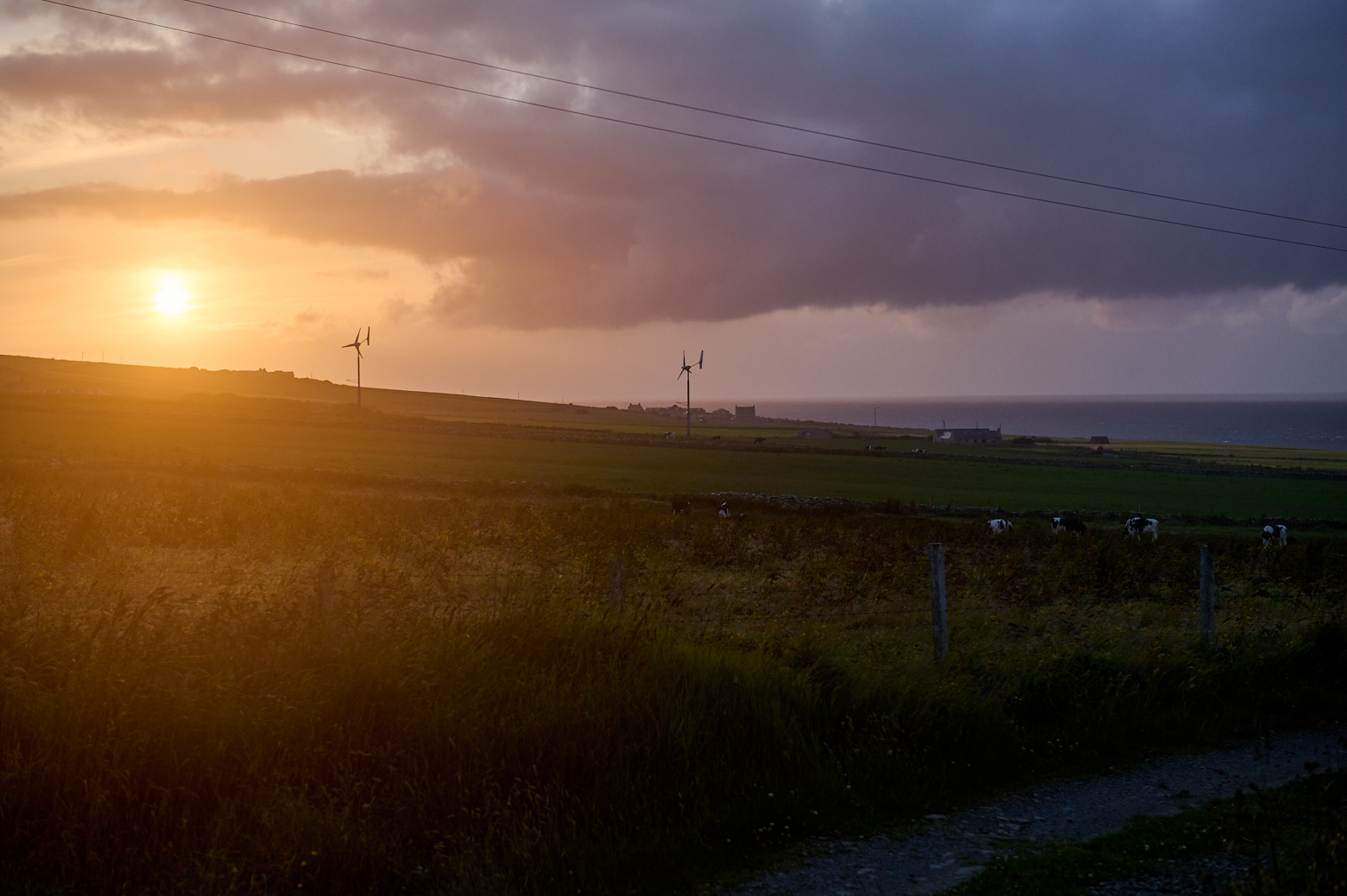
My last evening in Evie and the first almost sunset I saw in the last weeks, it really doesn´t get dark in the summer in Shetland or Orkney.
The next day I went back to the Ness of Brodgar, the Neolithic Heart of Orkney, but went to the other side of Loch of Harray first to enjoy the views over the landslip from there.
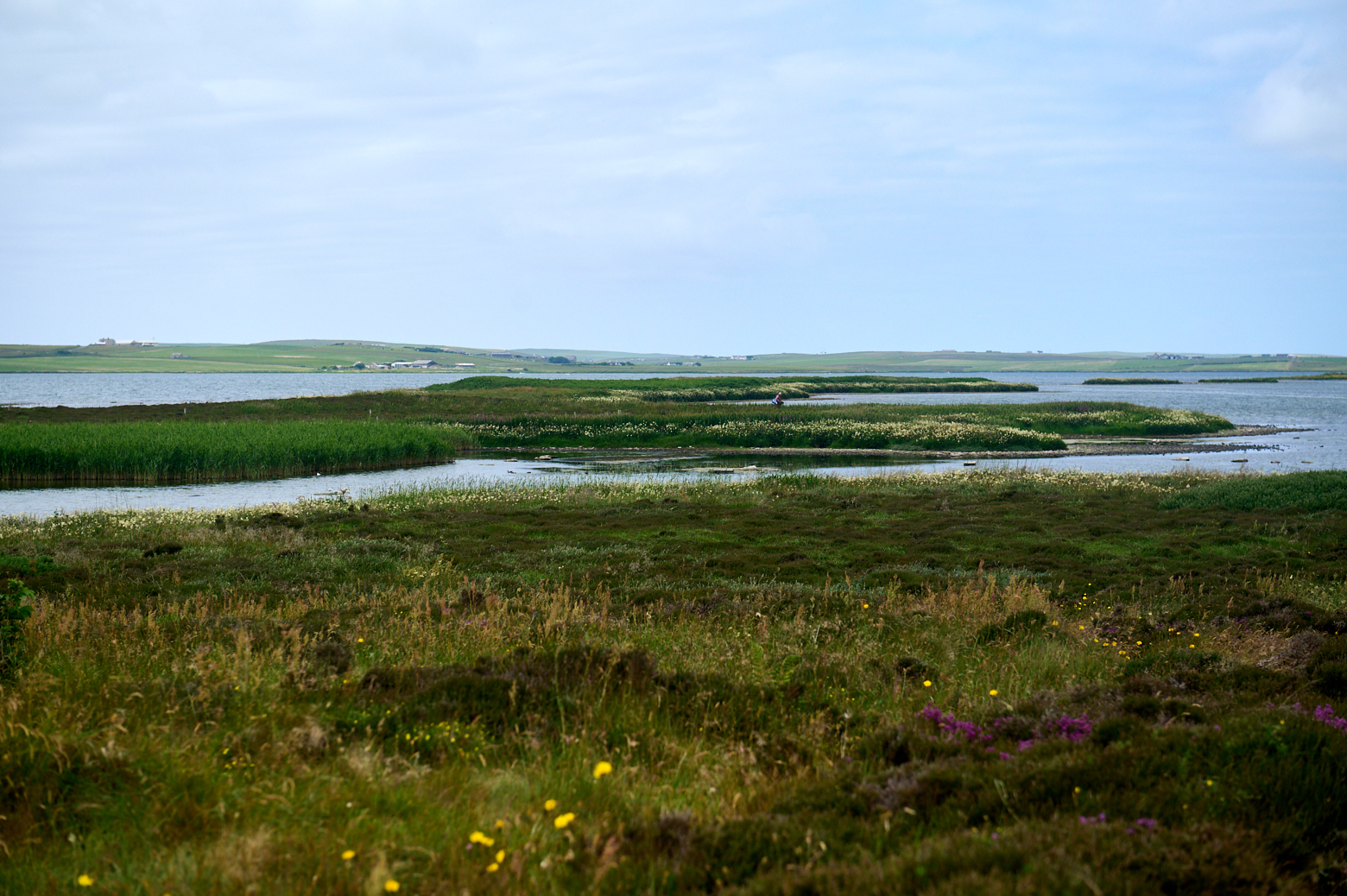
View towards the Ring of Brodgar and the Ness of Brodgar.

The backside of Maeshow – the large Neolithic chambered tomb that was still closed because of Covid safety measurements, but the Historic Environment Scotland offered talks about and so I learned quite a lot of the history of the tomb and Neolithic Orkney.
Stones of STenness
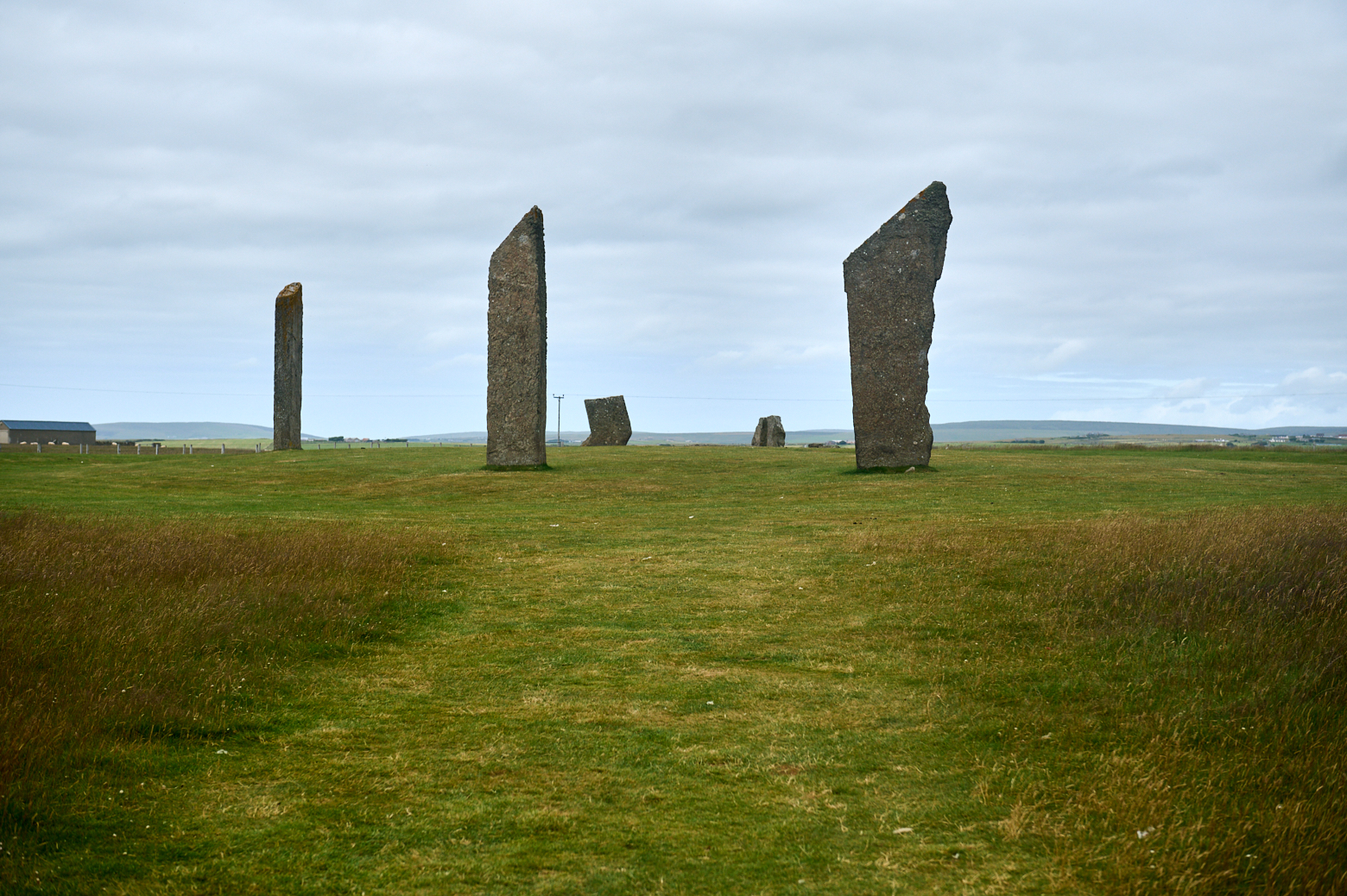
When driving back towards the Ness of Brodgar one can´t miss the Stones of Stenness Circle and Henge – another impressive circle of standing stones and also the ruins of a settlement.
The Stones of Stenness you see and marvel at today are just a part of a ring of 12 tall stones and a surrounding ditch placed here some time between 3000BC and 2500BC. This was about the same time that nearby Maeshowe was being built, but well after Skara Brae was occupied and well before another stone circle was constructed a little to the north at the Ring of Brodgar. (Undiscovered Scotland)
The site dates back to at least 3100 BC and is one of the earliest stone circles in Britain.
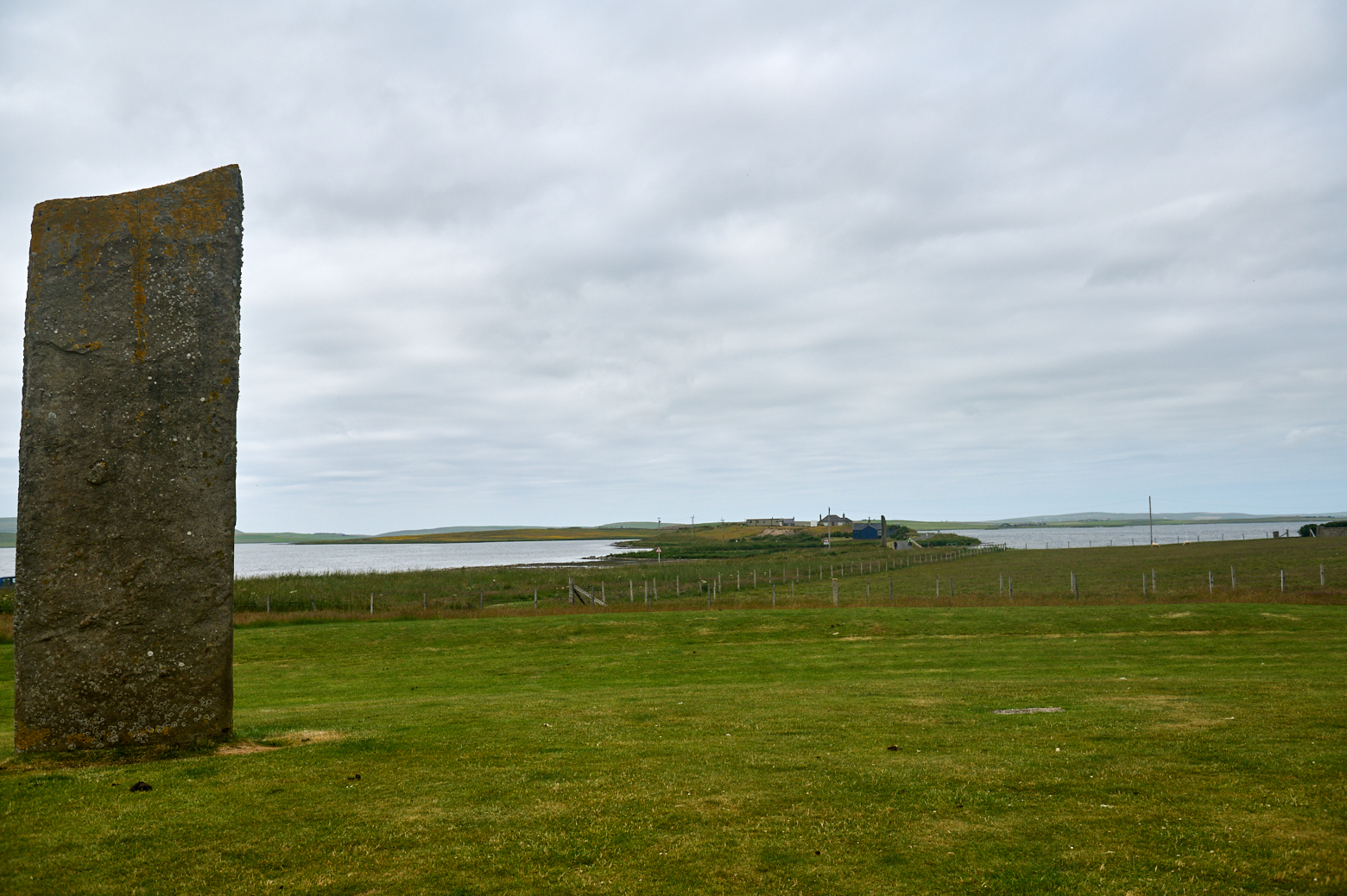
Time hasn´t treated the stones well, in the 19th century only 4 stones were still standing and a local farmer got annoyed with all the visitors and
He destroyed the nearby “Stone of Odin” and toppled a second stone that was part of the ring before he was stopped. The Stone of Odin was an especially sad loss. It had a circular hole, through which local lovers plighted their troth by holding hands. (Undiscovered Scotland)
Around 1900 this toppled stone was reerected and was another one found under the turf.
When complete, the Stones of Stenness would have been a magnificent sight. The tallest of the stones still standing is 5.7m or 19ft high. Imagine the impact of three times as many of them. (Undiscovered Scotland)
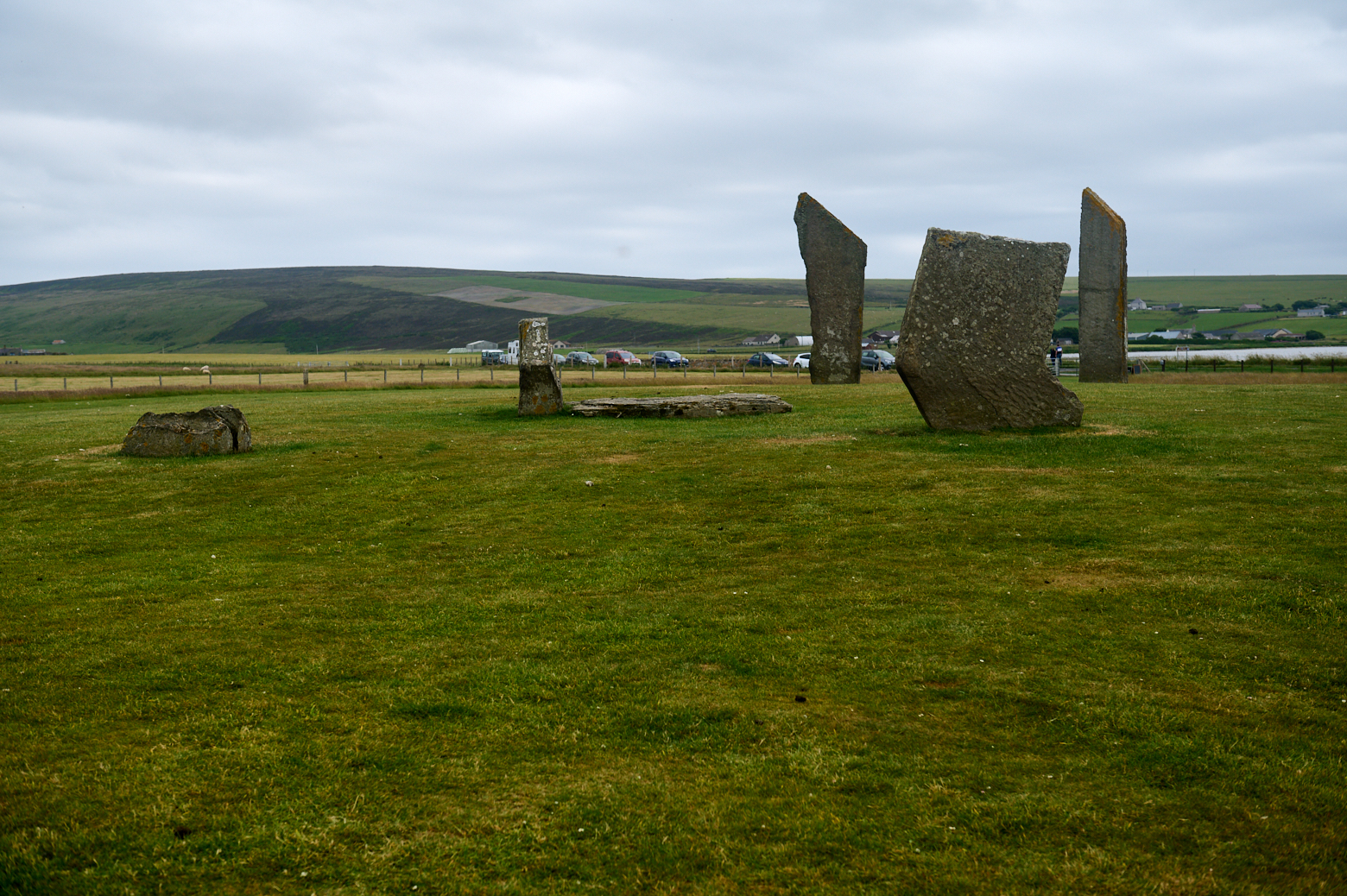
The views all around the circle are amazing, on clear days one sees up until the Island of Hoy.
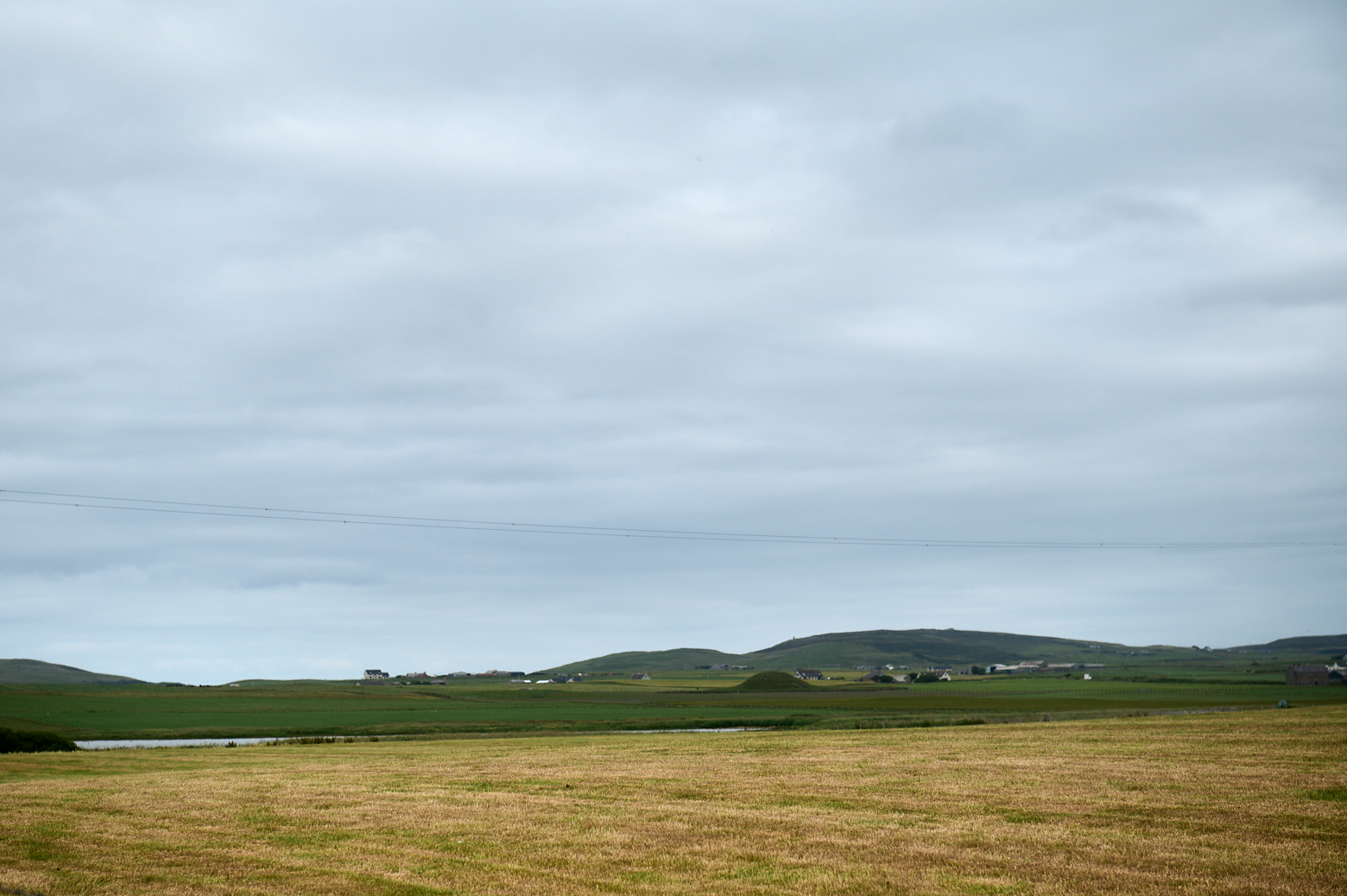
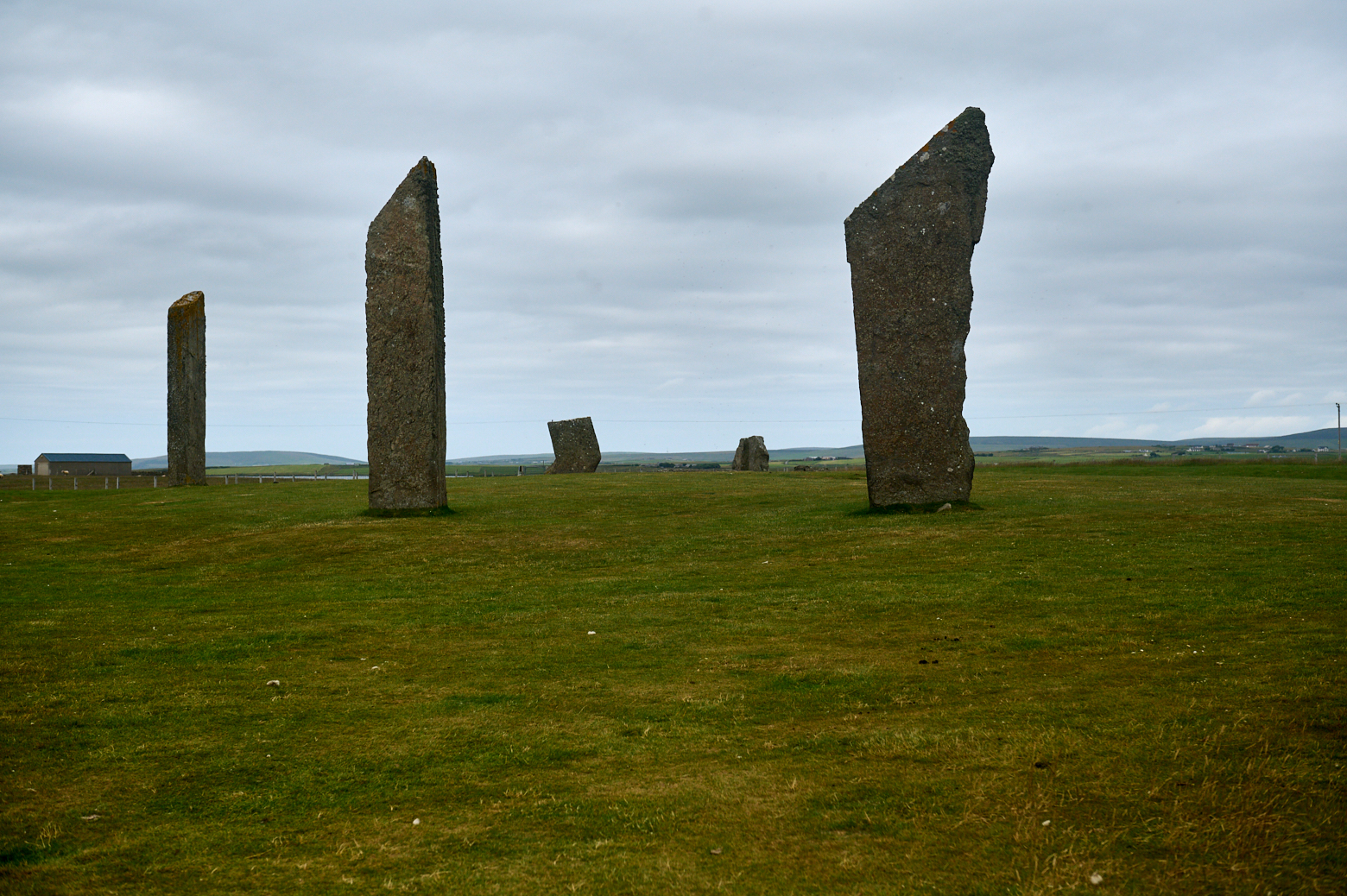
The Stones of Stenness today consist of four upright stones up to 6m in height in a circle that originally held 12 stones. The focus of the interior was a large hearth. The stones were encircled by a large ditch and bank, the form of which has been lost over time by ploughing. (Historic Enviroment Scotland)
It might have never been completed though, excavations showed that the last two stones might have never been erected.
The Barnhouse settlement
Follow the path toward the loch behind the stone circle and you will find the remains of another Neolithic settlement – the Barnhouse settlement.
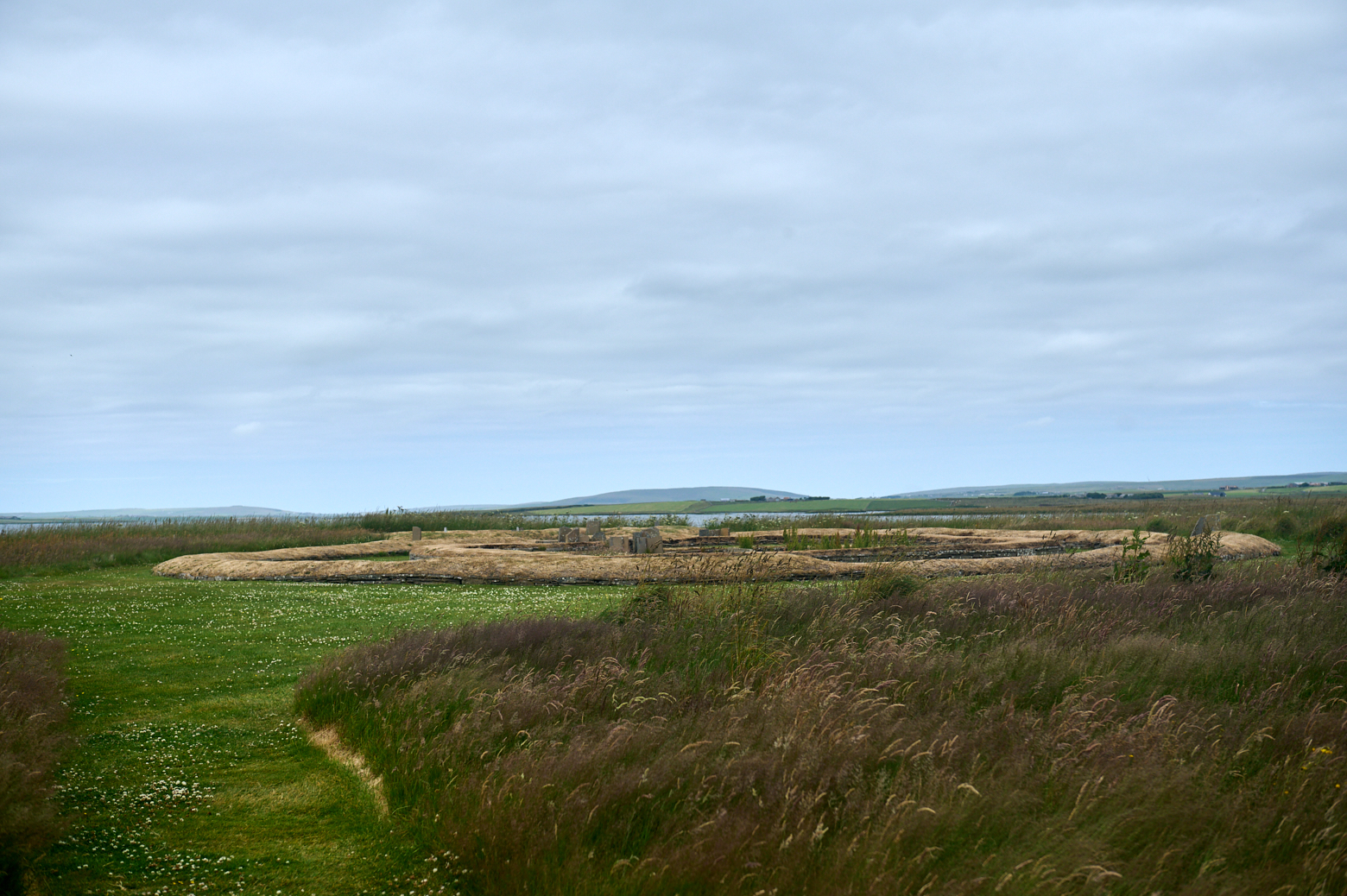
The Barnhouse settlement was inhabited between 3300 and 2600 BC and consisted of six small houses similar in style to the early circular houses at Skara Brae built around a larger and more elaborate building. A stone age village.
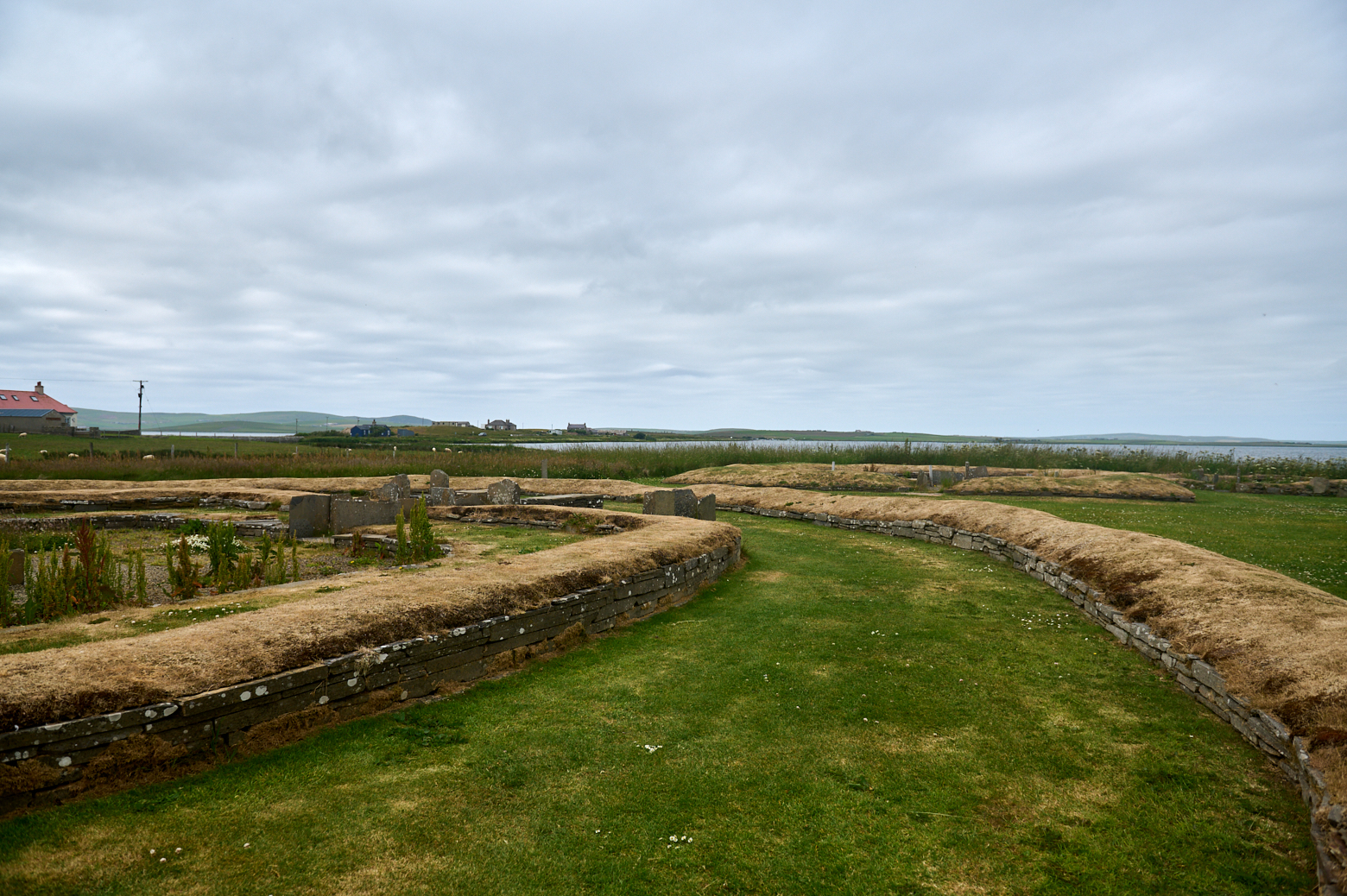
First excavated in 1984 this settlement is often overlooked and less known than its counterpart in Skaill bay.
Unlike Skara Brae, which was protected for millennia by a cocoon of sand, Barnhouse had been badly damaged by centuries of ploughing. As a result, only the reconstructed lower courses of the structures are visible today. (Ness Of Brodgar. co.uk)
It might have been the home to the stonemasons of the Ring of Stenness or it even might have been the home of people of great importance according to the size of the houses.
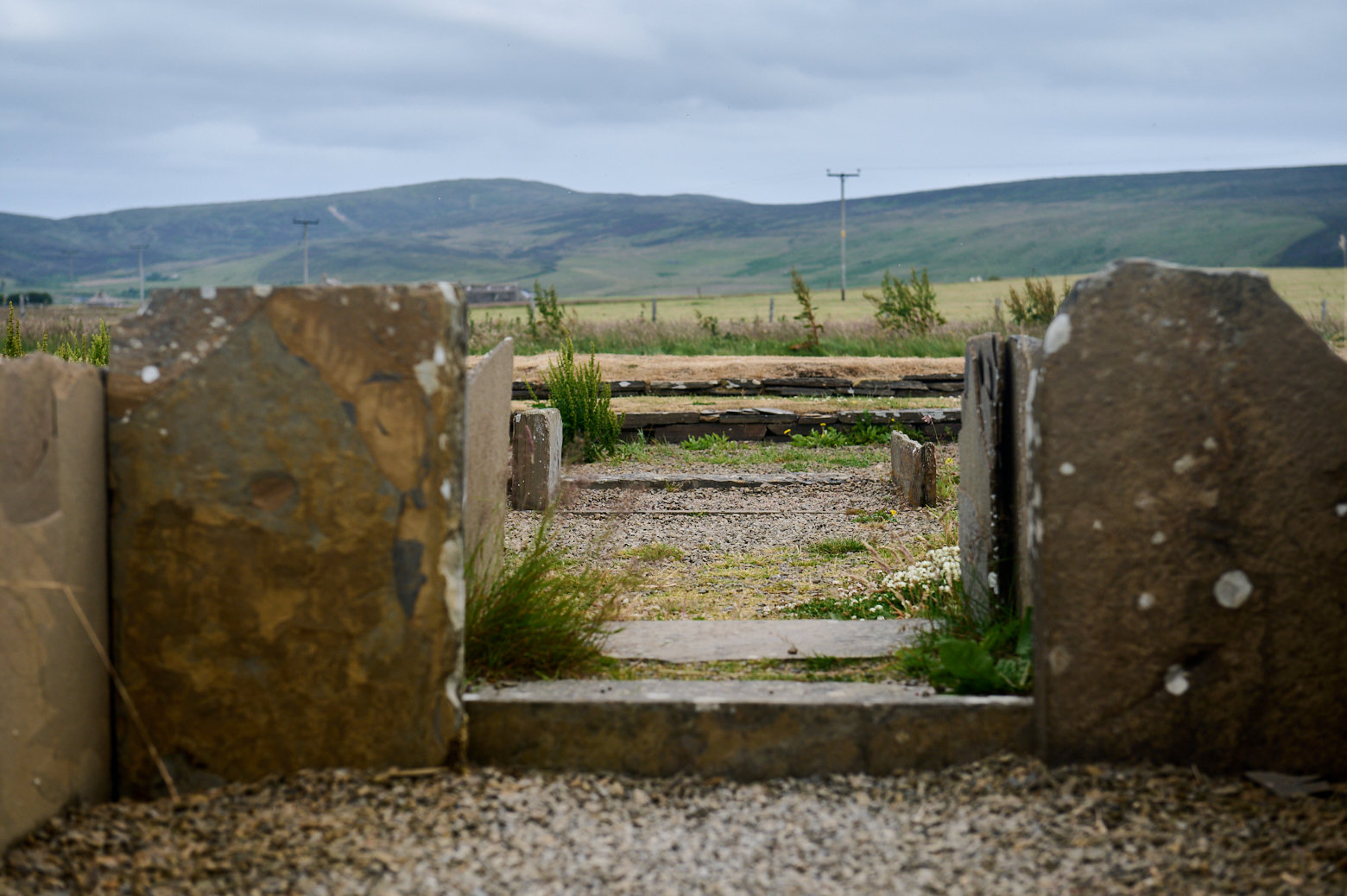
The finding of this village completely changed the view of the Ness of Brodgar.
Before its discovery, the area around the Ness of Brodgar peninsula was seen as a purely “ritual landscape” – the home of Neolithic monuments, megaliths and stone circles kept separate from “domestic” life.
The settlement at Barnhouse showed, without a shadow of a doubt, that people were dwelling among the monuments. (Ness of Brodgar.co.uk)
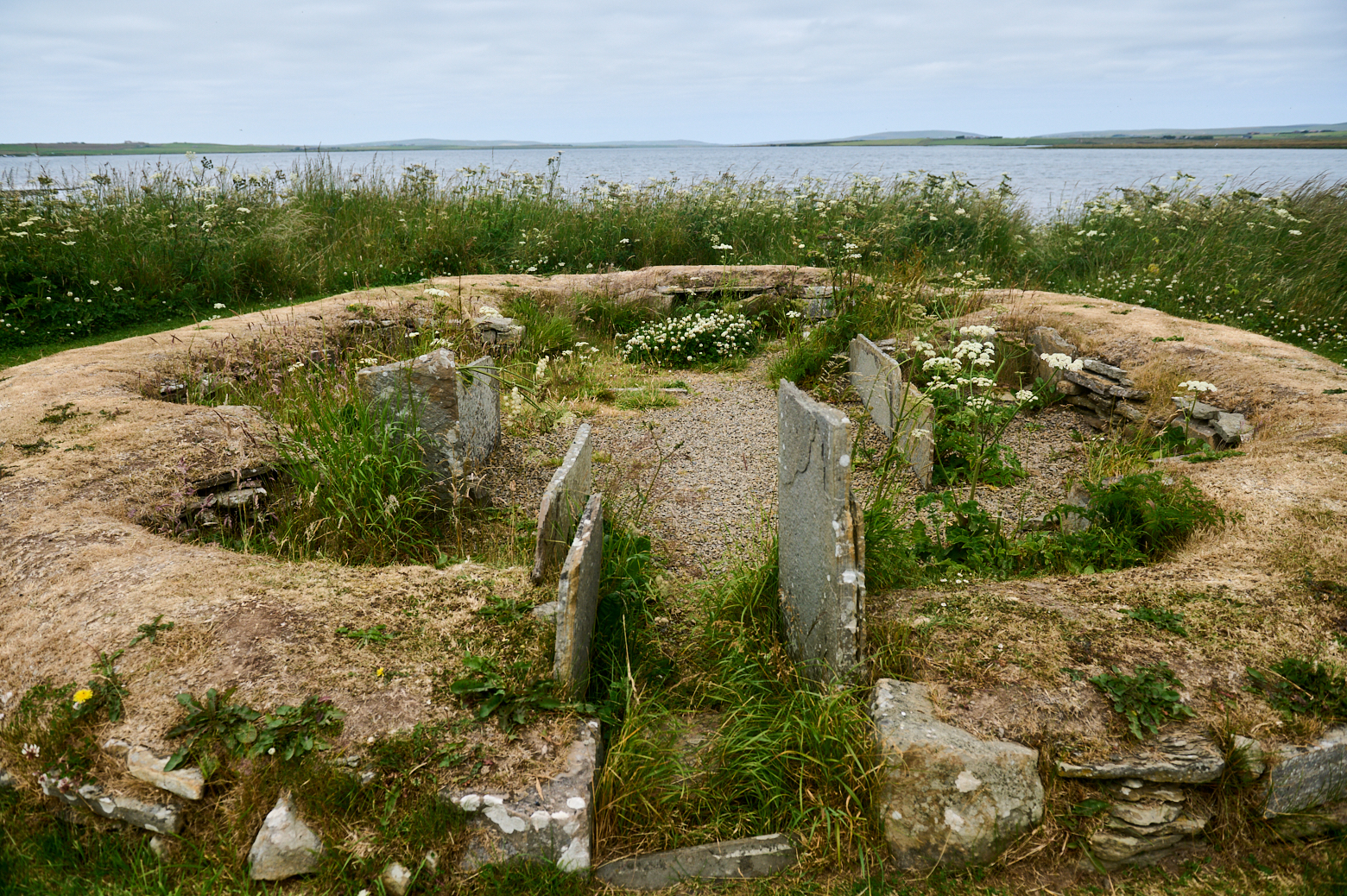
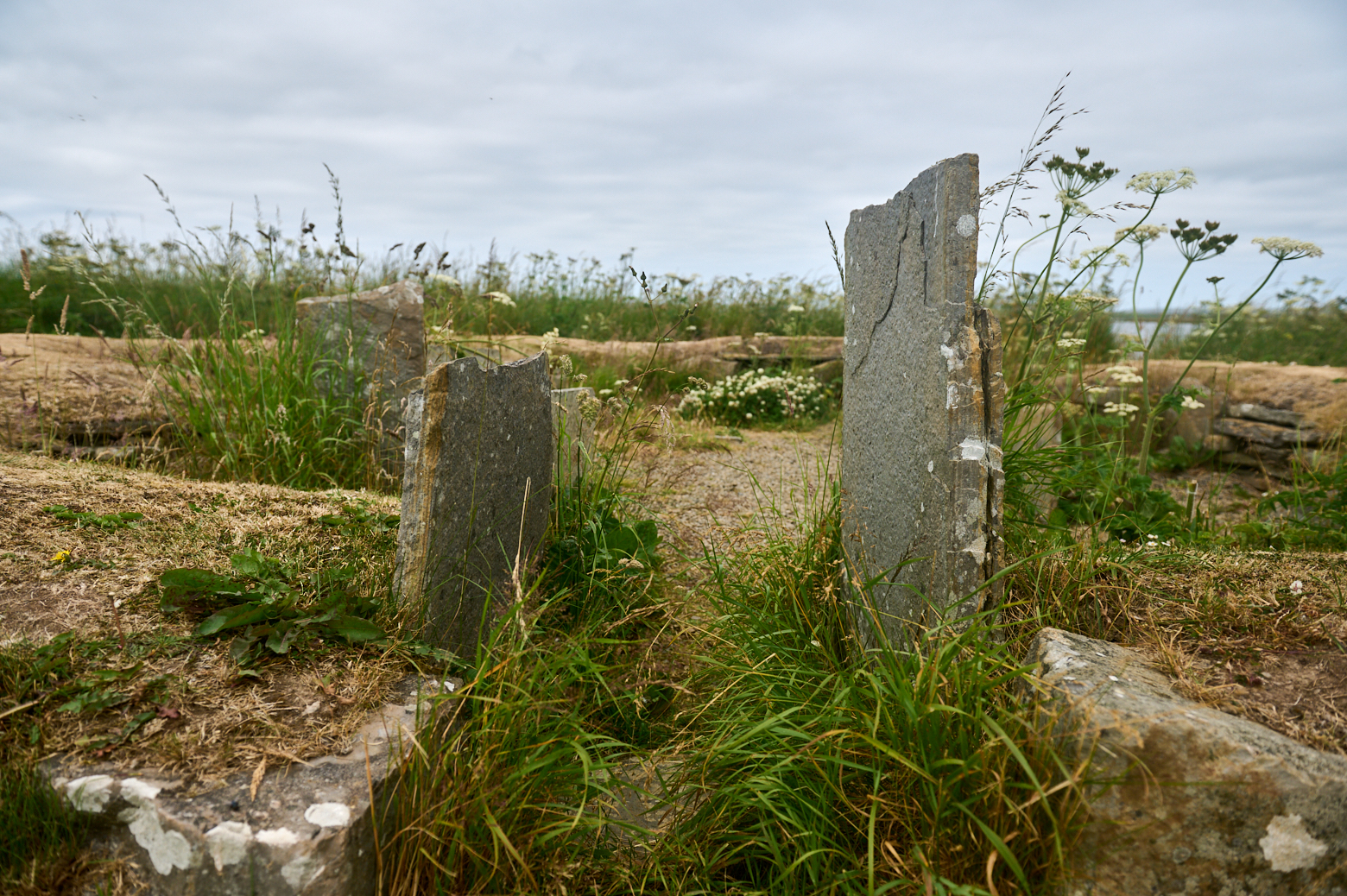
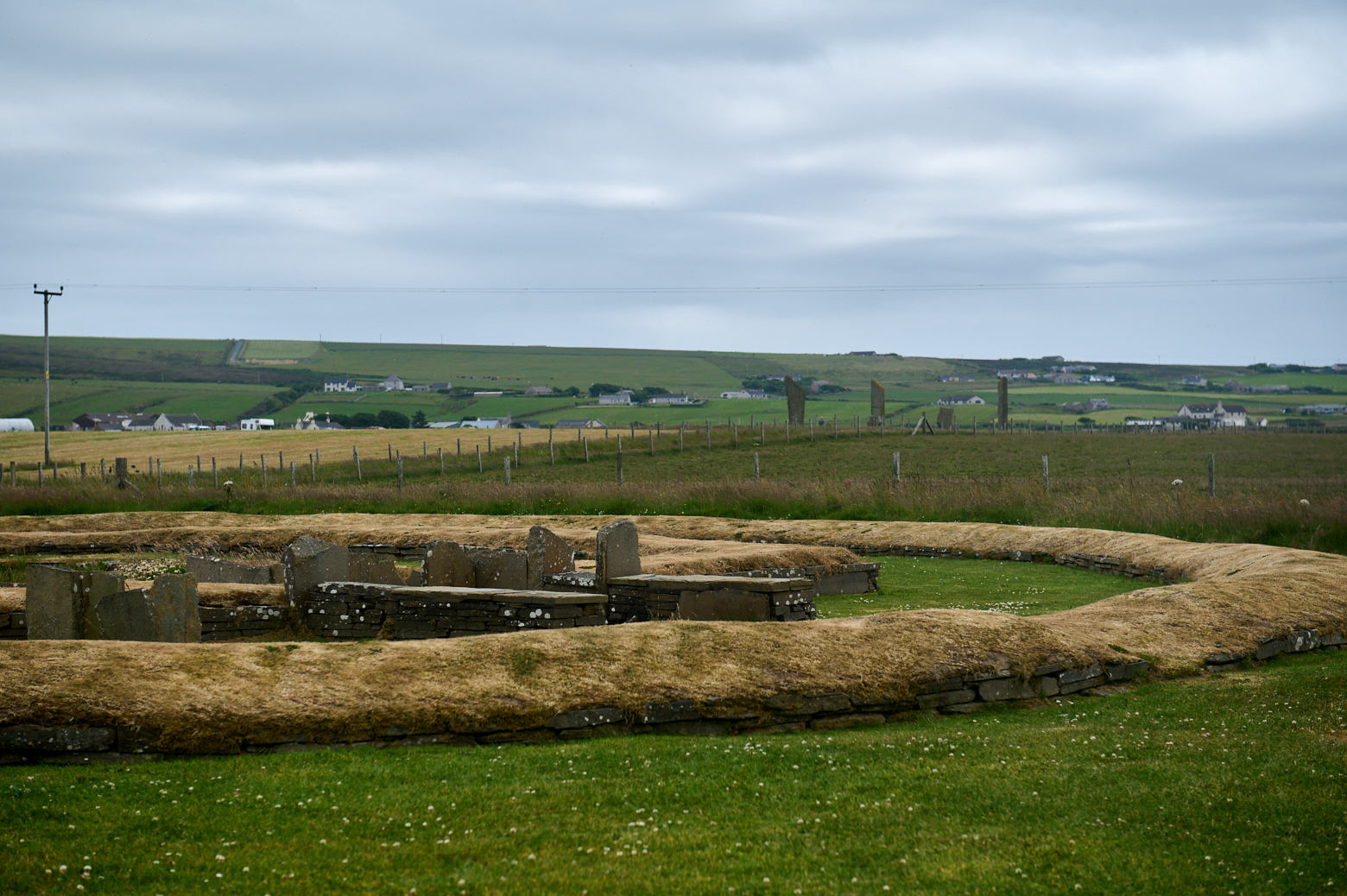
The short distance between the circle of standing stones and the settlement.
The Watch Stones
Heading back to the roading towards the Ness of Brodgar one can´t miss the 6,5m tall standing stone in front of Brig o’ Brodgar (bridge)
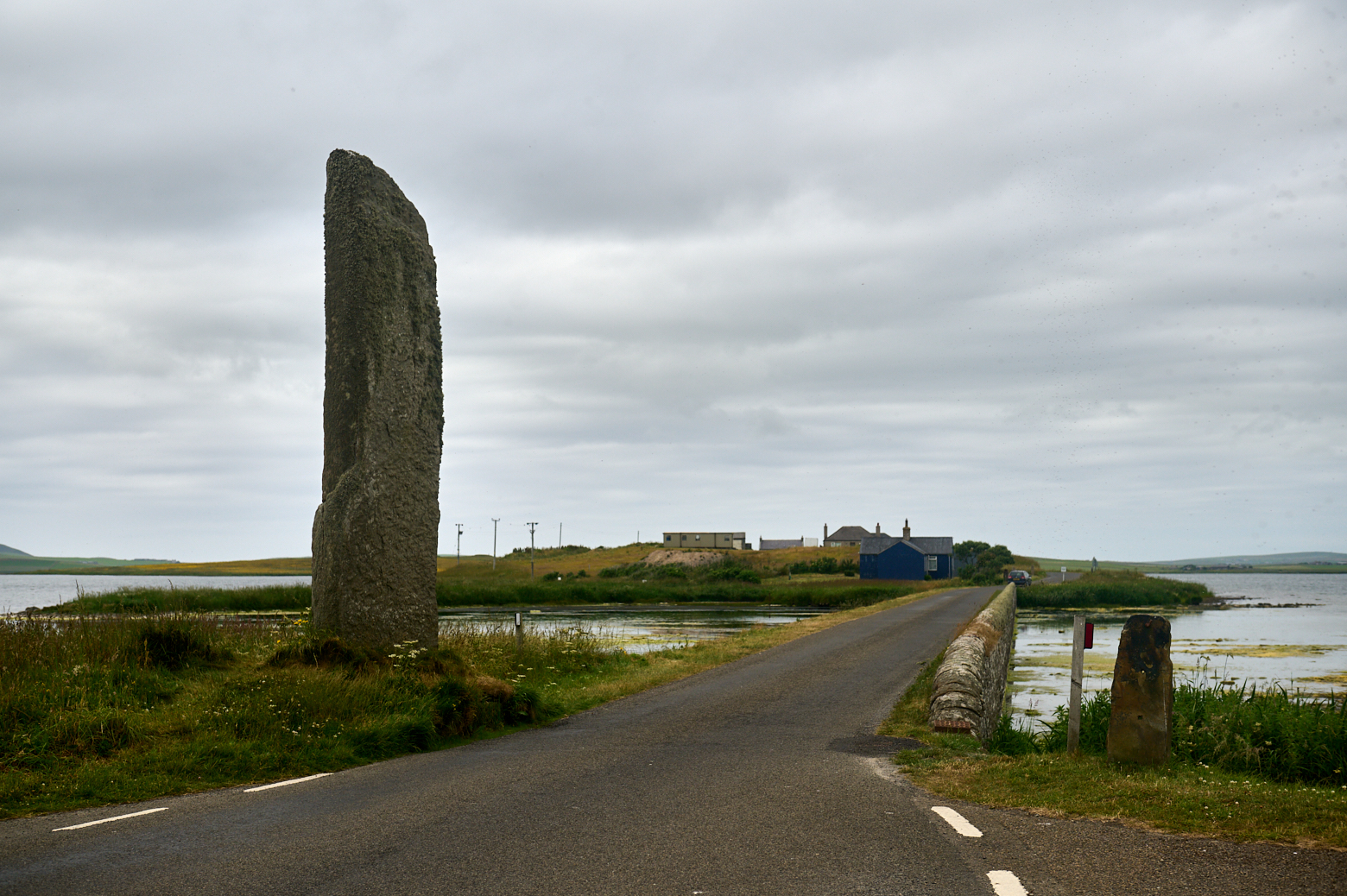
Skaill Bay
I was heading back to Skaill beach, close to my new home for the next days and enjoyed some time watching the surfers and just relaxing.
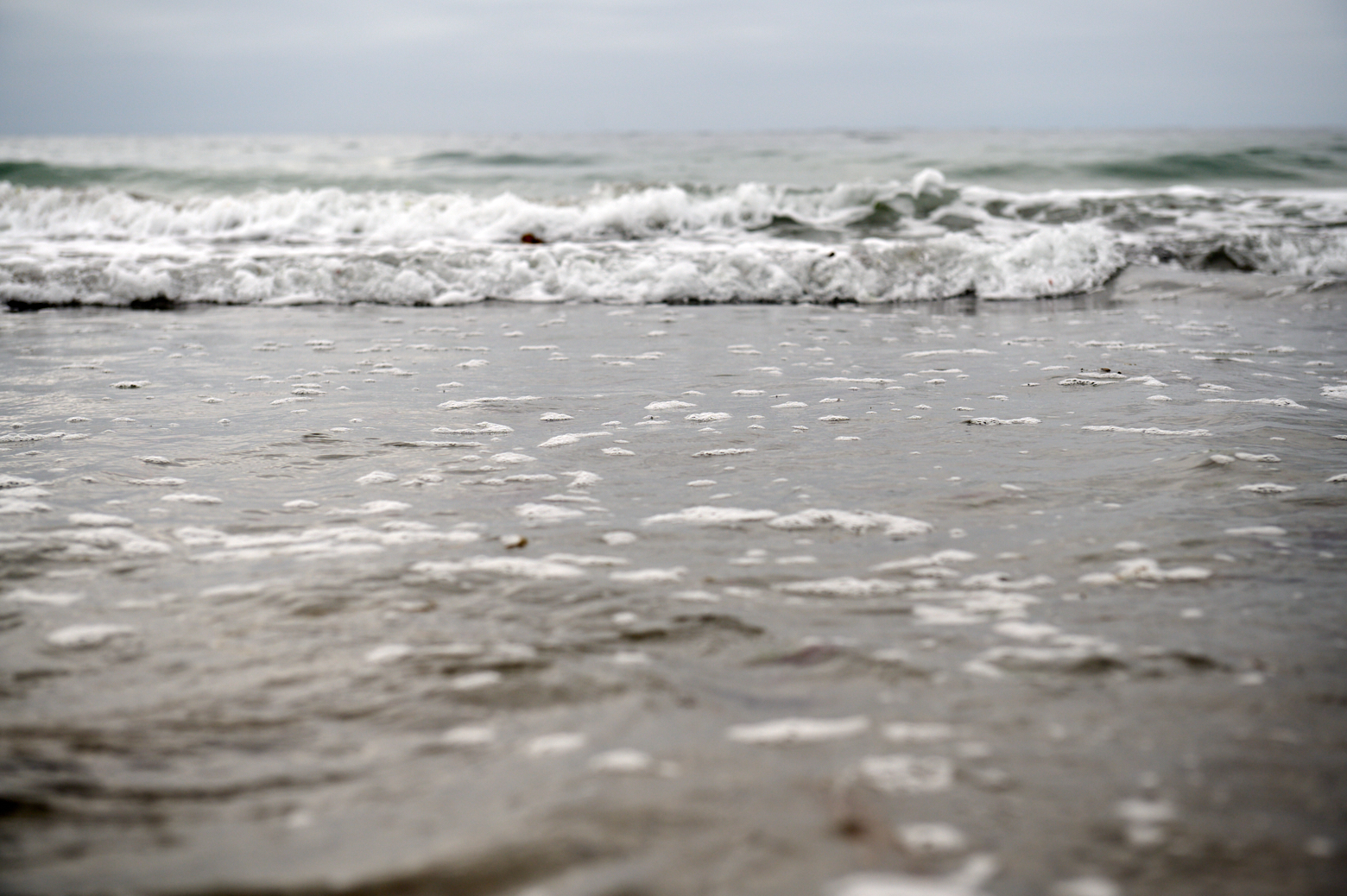
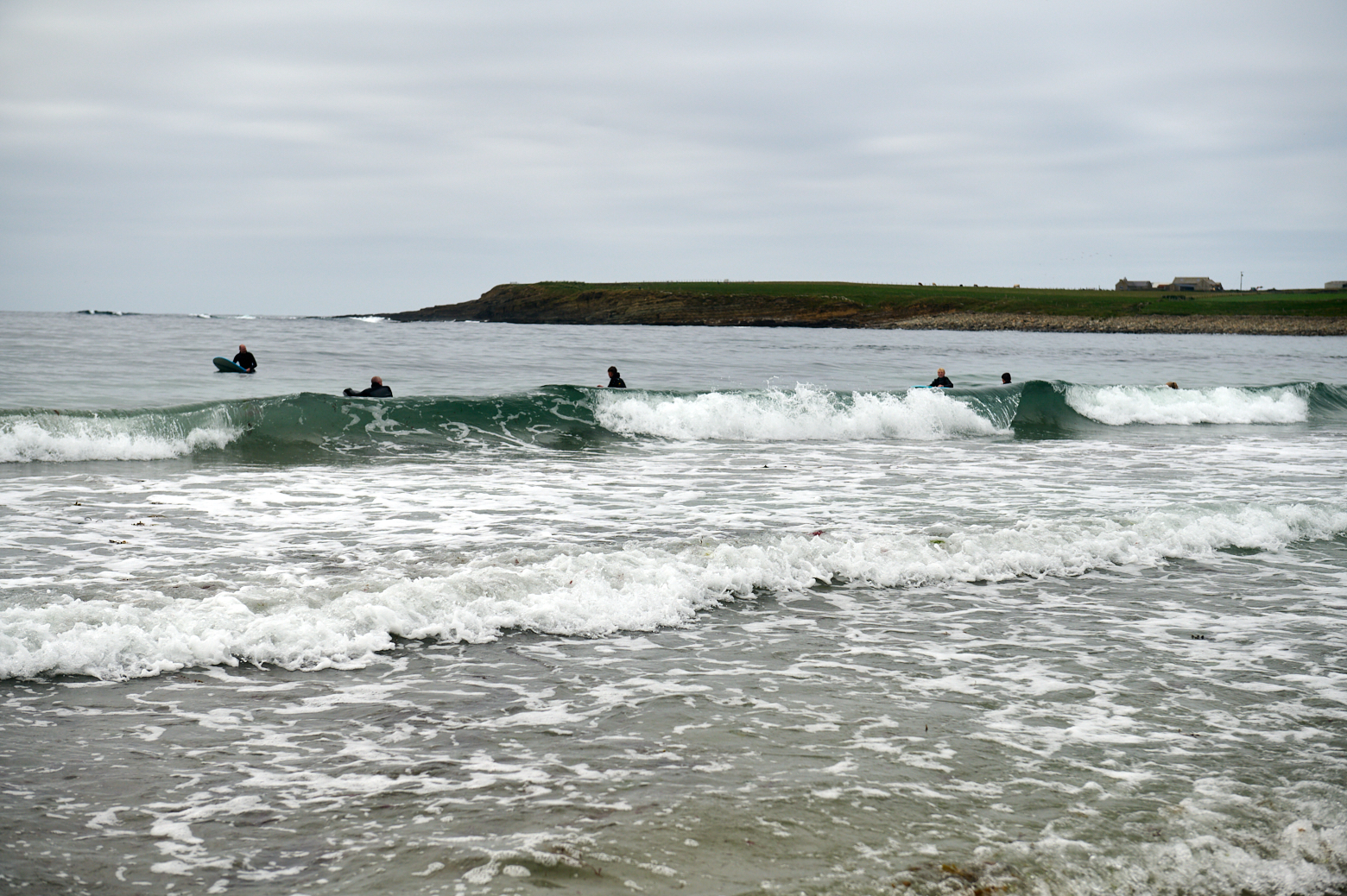
Leave a Reply